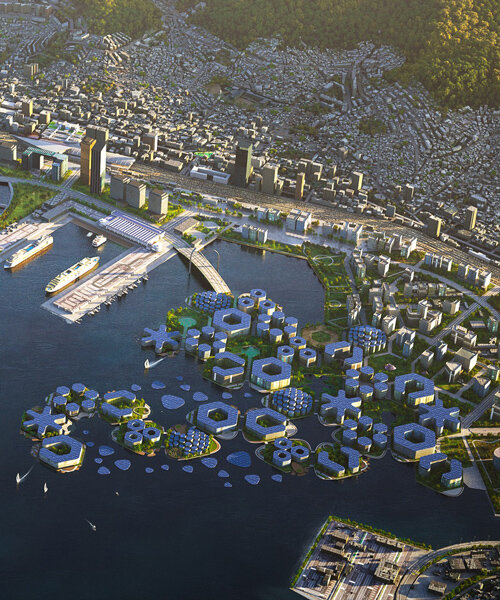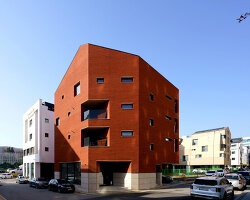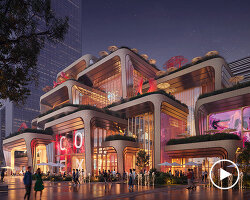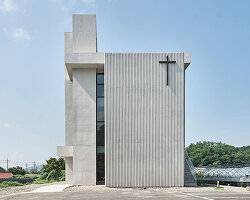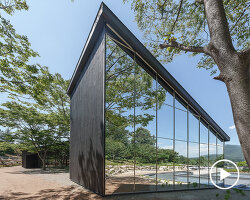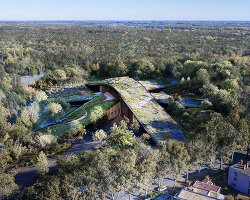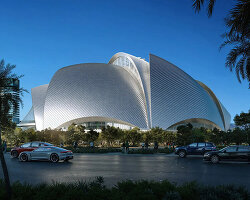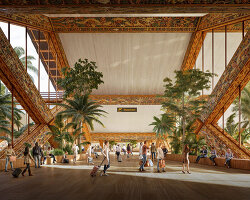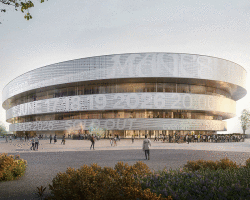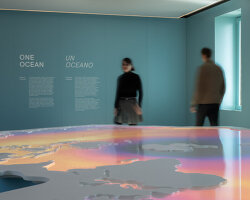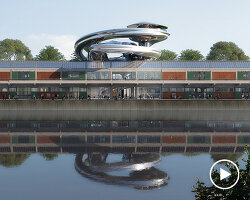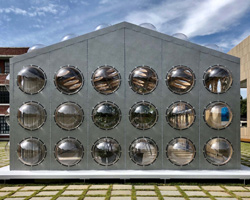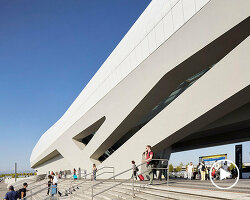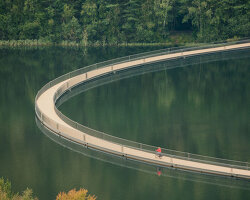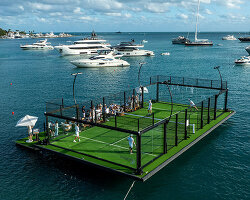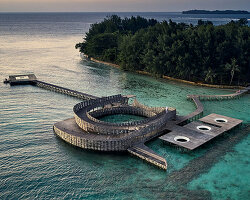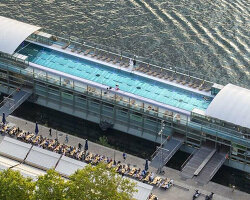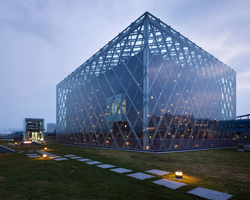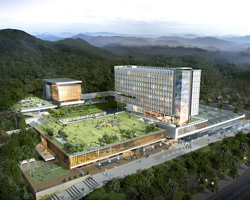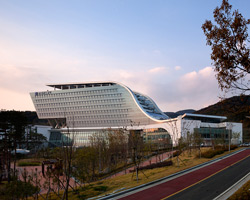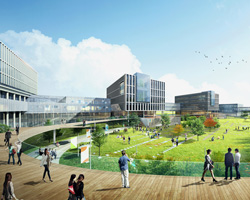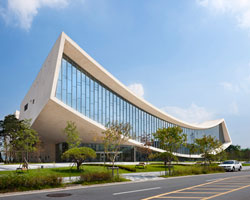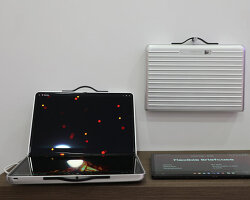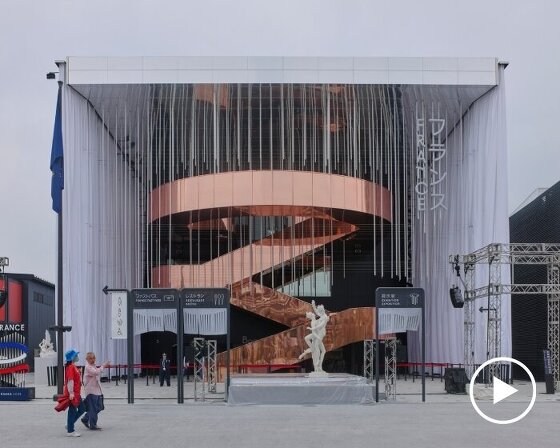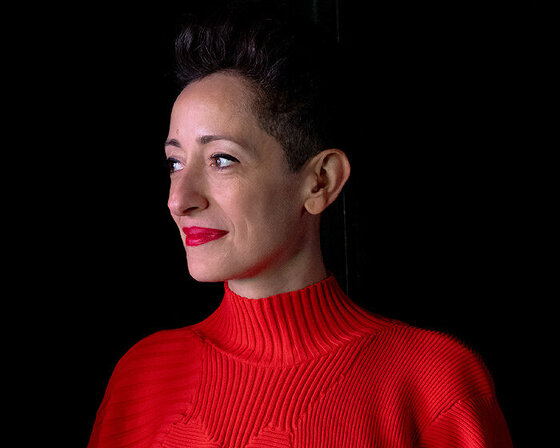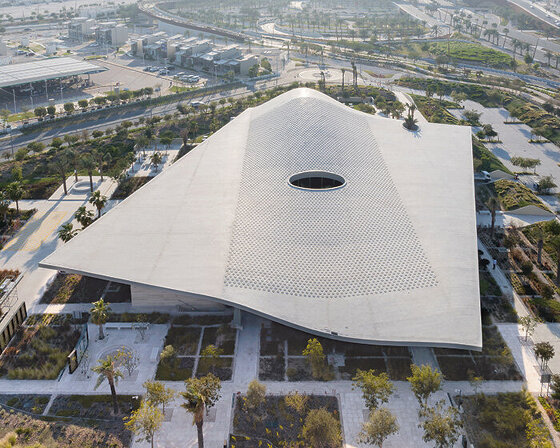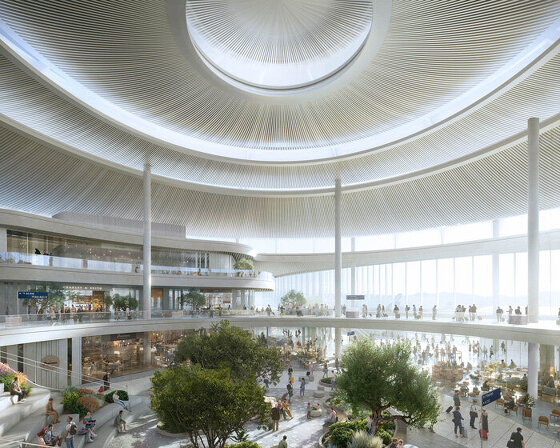a coastal city adapting to rising sea levels
The team at Bjarke Ingels Group (BIG) unveils new details about its OCEANIX off the coast of Busan, South Korea. Said to be the ‘world’s first sustainable floating city,’ the project will be designed together with Samsung-owned architecture practice SAMOO, and built by advanced maritime company OCEANIX with UN-Habitat.
Floating cities like this might be the key to overcoming the rising sea levels caused by climate change, which are indeed posing an existential threat to island and coastal communities (see designboom’s coverage of sinking cities here). While Busan marks a critical port with around 3.4 million residents, the city teamed with Bjarke Ingels Group to adapt to its changing environment. See designboom’s previous coverage of the floating city here.
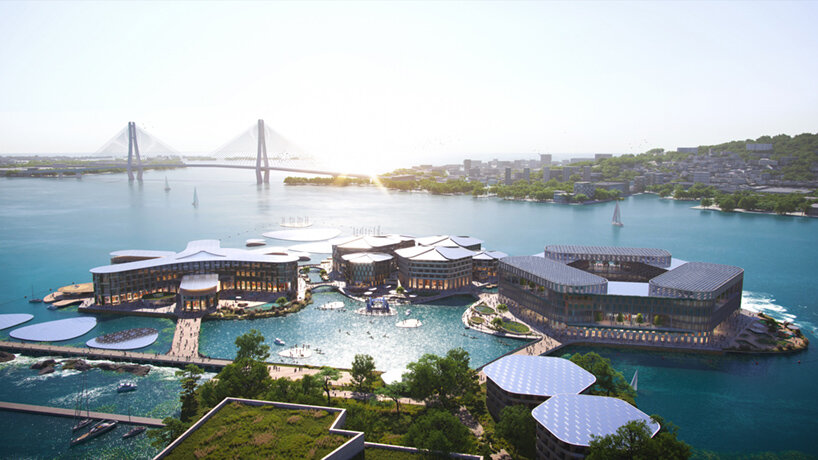 images courtesy of BIG
images courtesy of BIG
oceanix: bjarke ingels group’s growing city on the water
Bjarke Ingels Group / BIG (see more here) organizes its OCEANIX city in Busan, South Korea as a floating cluster of interconnected platforms. Connected by a network of bridges, each platform hosts its own specific program including living spaces, research facilities, and lodging. While the proposal will cover a total area of 15.5 acres to accomodate 12,000 people, the city is designed to easily expand outward and could theoretically house as many as 100,000 occupants.
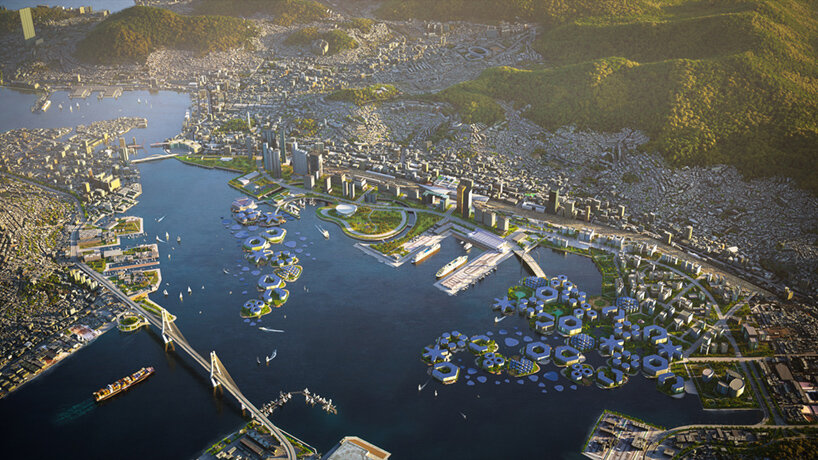
the first floating city, a sustainable prototype
Bjarke Ingels Group’s floating architecture off the South Korean coast is designed to withstand natural disasters and to produce its own food, energy and freshwater. This will be achieved in part through the integration of zero waste and circular systems, closed loop water systems, food production with greenhouses, net zero energy, and coastal habitat regeneration.
The team at BIG says that the project will generate the entirety of its operational energy on-site by way of solar panels applied to the rooftops and floating offshore. meanwhile, each neighborhood will treat and reuse its own water and use what are described as ‘innovative urban agriculture’ systems.
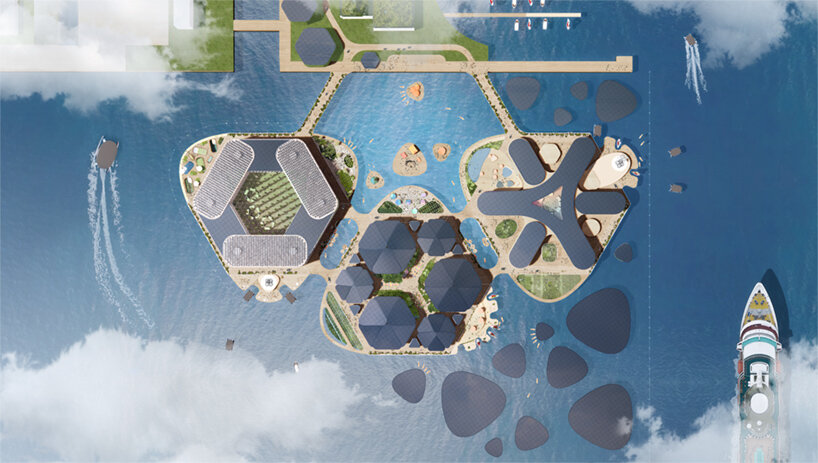
the floating architecture is designed to withstand natural disasters
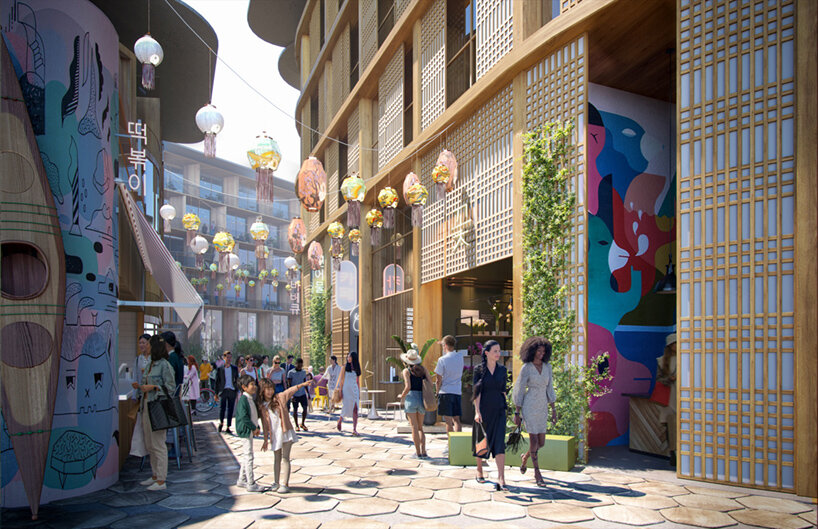
the city will produce its own food, energy and freshwater
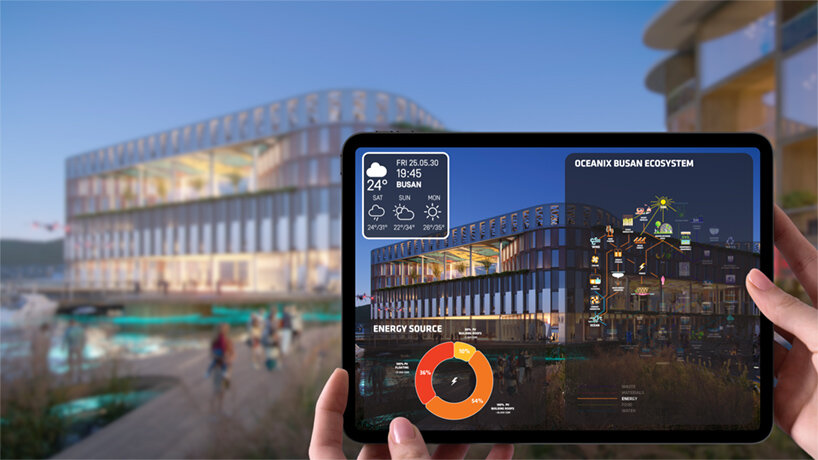 residents will be in-touch with the ecosystems of the city
residents will be in-touch with the ecosystems of the city
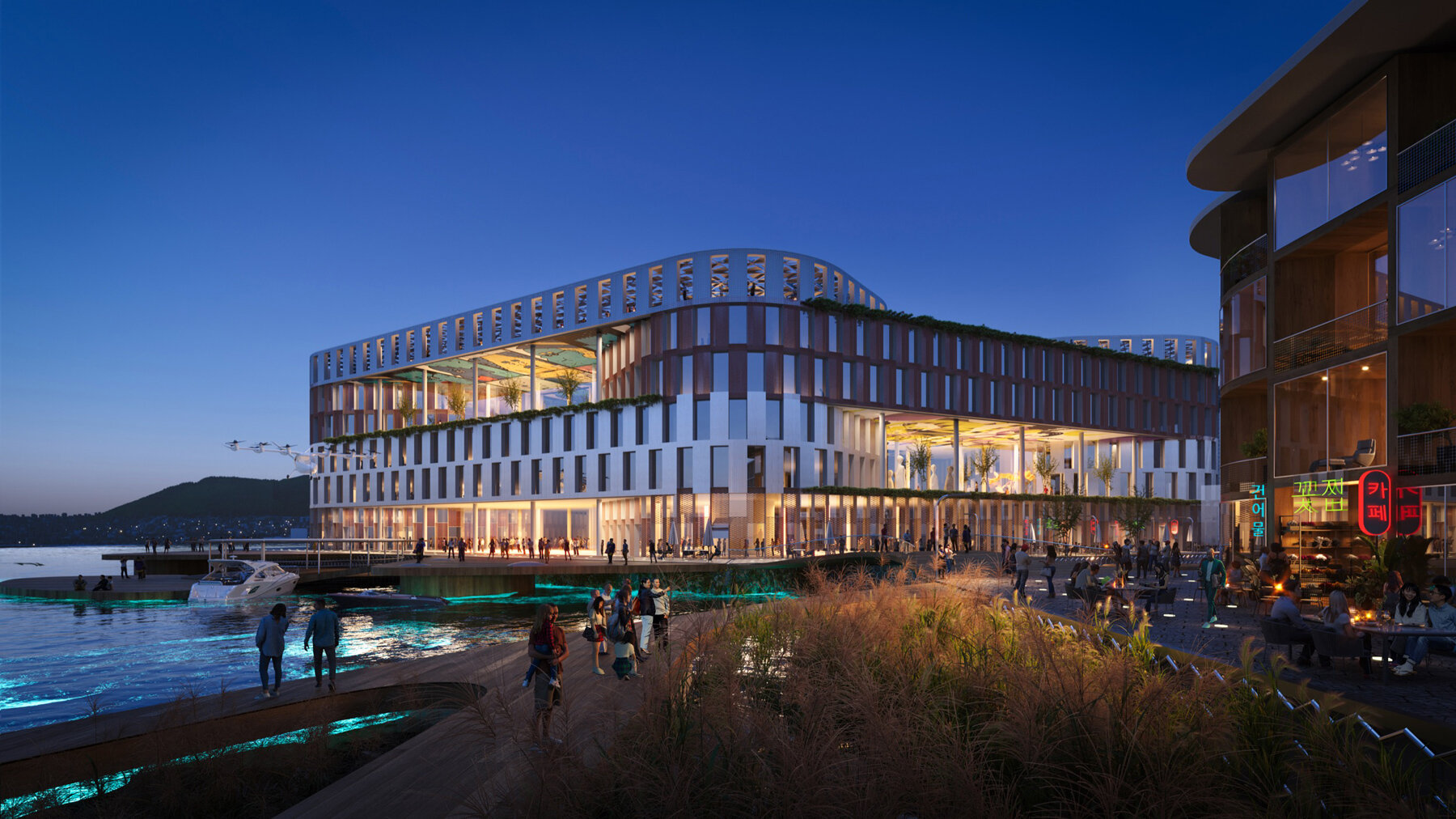
the project will be the world’s first floating city prototype
project info:
client: OCEANIX
size: 75 hectares
collaborators: MIT Center for Ocean Engineering, mobility in chain, sherwood design engineers, center for zero waste design, transsolar klimaengineering, global coral reef alliance, studio other spaces (olafur eliasson and sebastian behmann), dickson despommier
BIG–bjarke ingels group —
partners-in-charge: bjarke ingels, daniel sundlin
project leaders: alana goldweit, jeremy alain siegel
team: Einat Lubliner, Santiago Letona, Veronica Acosta, Jeremy Alain Siegel, Isela Liu, Jaeho Park, Pooja Annamaneni, Jasmine Idiakhoa, Jindian Fu, Terrence Chew, Tracy Sodder, Luca McLaughlin
